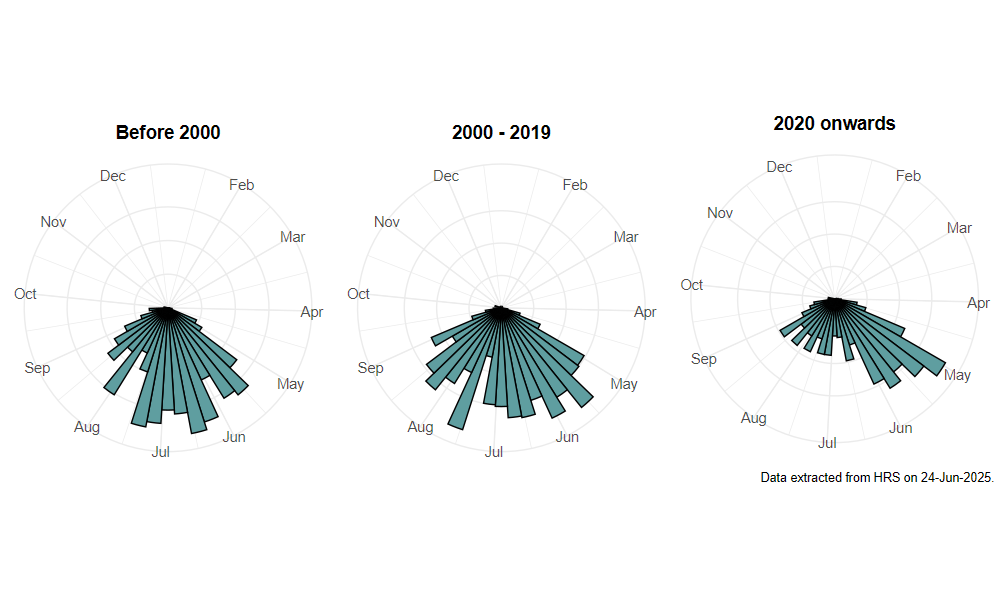Chrysotoxum arcuatum (Linnaeus, 1758)
Identification
Identification difficulty = 2. ![]()
![]() according to Ball & Morris, 20241
according to Ball & Morris, 20241
Biology
The larva has been found feeding on root aphids associated with ant nests. They are not easy to find, and the best time to search for them is at night (Rotheray, pers. comm.). Occurs widely in upland and moorland locations in unimproved grassland with scrub and in grassy openings in woodland. Adults fly low among ground vegetation and visit a wide range of flowers in sheltered situations.
Flight period
The following plots show the number of unique records per week excluding those reported to be of immature stages.

Distribution
A strictly northern and western species, locally frequent north of a line from the Severn to the Humber, although there is a confirmed record from the Brecklands of Norfolk.

Trends
The following plots show the Frescalo TFactor vs year and a map of the rescaled frequency (all records) for the species.
-
Ball, S., & Morris, R. (2024). Hoverflies of Britain and Ireland. WILDGuides (3rd ed.). Oxford: Princeton University Press. ↩
